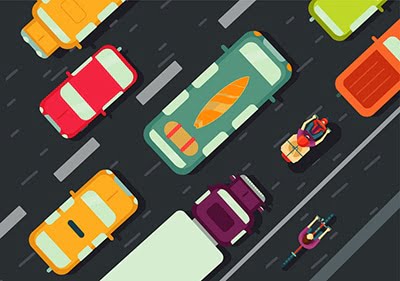Quiz: Maintaining space
The Ontario G1 written test is the most nerve-wracking part of the test. However, this shouldn’t be the case if you do a lot of practice; it will help you to gain the skill and confidence to conquer the test on your first attempt.
ADVERTISEMENT
Correct!
Wrong!
Correct!
Wrong!
Correct!
Wrong!
Correct!
Wrong!
Share the quiz to show your results !
Subscribe to see your results
I got %%score%% of %%total%% right
More Learning Options:
Loading…
ADVERTISEMENT
Why is It Important to Drive with a Space Cushion?
For any beginner driver, you may wonder what a space cushion in driving is. Well, a space cushion is an area around your vehicle that helps you maneuver easily in any condition. In a space cushion, no other cars are in that space. It includes the space in front of, behind, and on both sides of the vehicle. A standard space cushion should be 3 seconds between you and the car in front in perfect conditions.
Every driver on the road believes they are the best then everyone. Some drivers are overconfident, and you can see that by the way, they switch lanes at high speeds or tailgating. To ensure you are safe on the road, you have to watch the road space around your vehicle.
Whether you are driving on an open country road or you are stuck in traffic, it is always good to maintain a three-second following distance to the car in front of you. No matter your driving level, you will react well in an emergency.
Why Is It Important to Drive with a Space Cushion?

Think of this: Imagine, while driving, one of the car tires blows. The tires will drop pressure suddenly, making your car swerve to one side. You don’t know which side the car will swerve on because it was unexpected. You could quickly swerve into another vehicle or a pedestrian. That’s why you need to have a space cushion.
If you are driving in congested traffic, you must be extra careful because you won’t have enough space cushion on all sides.
Still, having a safe space cushion can help you react fast in an emergency. Many factors affect our reaction time, including age, vision, and health. Age is the most common factor that affects our reaction. You can easily avoid a collision if your response is good and you have a safe space cushion, no matter your age. Always make sure you drive 3-5 seconds behind the car ahead of you, as this will help you see, process, and react to the emergency.
How to Create Space Cushion when Driving?
Advanced drivers know how to create a space cushion on the road. For new drivers, it’s tricky to create a space cushion since they are still learning. To ensure you and the drivers around you are safe, this is how you create a space cushion when driving. To create a space cushion, you should do the following:
Get the big picture
Ensure you stay alert to important information, such as what the vehicles around are doing. This will enable you to make well-informed and safe decisions.
Keep your eyes focused
First, identify stationary objects while driving. The moment you choose your focus point, monitor the car ahead as it passes the point, then count to three. You should count slowly, and if it takes three seconds to reach the fixed point, your following distance is safe.
Beware of blind spots
Because your space cushion is not limited to the front of your vehicle, think about your vehicle’s sides and rear end. Beware of blind spots and whether you are driving in the blind spot of other vehicles because this puts you at an increased risk of a collision.
Watch your Tail
Who is responsible for the back-end space cushion? You are not; the driver behind you is. Even if they are accountable for the back-end space cushion, you should be careful how someone follows you from behind. If you feel like they are tailgating you, don’t slam your brakes to give a warning, as it can cause road rage.
The maneuver can be dangerous for everyone involved, leading to a crash. You should let off the gas and allow the car to pass or switch lanes if possible to create a safe space cushion once again.
How about Creating a Space Cushion in Inclement Weather?
When driving in inclement weather such as snow, fog, or rain, your visibility is reduced. So, you must consider road conditions and visibility if you want to stay safe on the road. Keeping a following distance of 3-5 seconds during inclement weather is good. This time will enable you to react and maneuver appropriately in an emergency.
Bottom Line
Unlike advanced drivers who like a space cushion of 3 seconds between them and the car in front, beginners need to have at least 3-5 seconds of space. Because they have no experience on the road, the space and time are adequate to help them react in emergencies. Still, in driving, there is no safe following distance. A safer following distance will depend on road conditions. However, it is essential to maintain a safe space cushion while driving to ensure safety.
